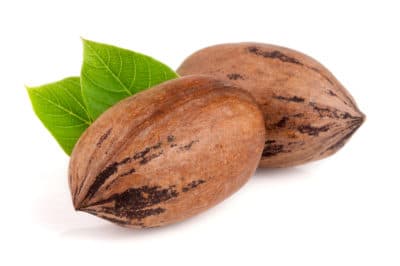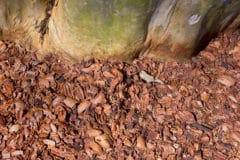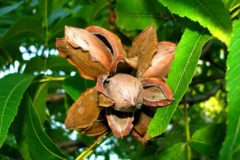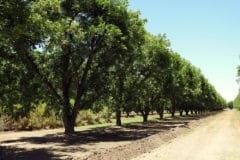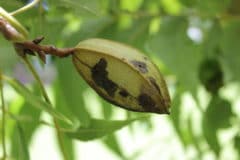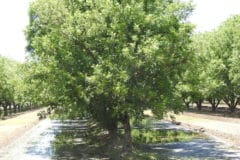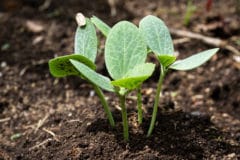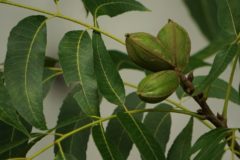Collecting and Drying Your Pecan Nuts
- Collect ripe nuts at harvest time in fall, when their outer husks have dried and begun to split open.
- Peel off the husks.
- Spread the nuts in their shells on a clean, flat surface to dry. Stir them at least once per day for even air flow.
- After 48 hours, try cracking a few each day. When the shells are brittle enough to snap cleanly, the nuts are dry.
Stratification
Stratifying your nuts exposes them to a long stretch of cold temperatures just like they’d experience during winter in the wild.
Things You’ll Need:
- A container of water to soak the nuts
- Vermiculite growing medium
- Container with drainage holes.
- Sealable plastic bag
- Refrigerator or storage area with a temperature between 36° and 40°F (2.2° and 4.4°C).
While the nuts are soaking in water for 24 hours, put the vermiculite in a container with drainage holes. Add enough water to moisten it thoroughly and let it drain overnight. Place the nuts and enough damp vermiculite to cover them in the plastic bag.
After sealing and labeling the bag, store it at the recommended temperature from two to five months, depending on your spring planting date. Pecan trees grow in USDA plant hardiness zones 5 through 9, so that date can vary widely.
Expert gardener’s tip: A storage temperature below 35°F (1.7°C) will kill the embryonic seedlings in their shells.
Sprouting the Seeds
For this phase of the project, you need:
- 2-gallon nursery pots with drainage holes, one for each seedling
- Horticultural sand
- Garden loam
- Acidic organic mulch such as pecan shells.
- Watering hose
Fill the pots with equal amounts of garden loam and horticultural sand. In the center of each, make a hole twice as deep as your pecan seeds are wide (in most cases about 2 inches).
Drop a seed into each hole and cover it with the growing mix. Insulate the seeds with a 1-inch layer of the organic mulch and water each pot until the top 5 inches of soil are well moistened and the mulch has settled.
Moving Outdoors
Set the pots outdoors in the shelter of a south-facing wall where they’ll have protection from the noonday sun. Water slowly and deeply when the top 1 inch of growing medium feels dry.
What to Expect
Expect your seedlings to emerge three to four weeks after the daytime temperatures warm above 70°F (21.1°C). Move them to a spot with at least six hours of daily sun. They’ll need 1 to 2 inches of water per week (including rain) until early fall, when you can transplant them to a garden bed for growing on.
